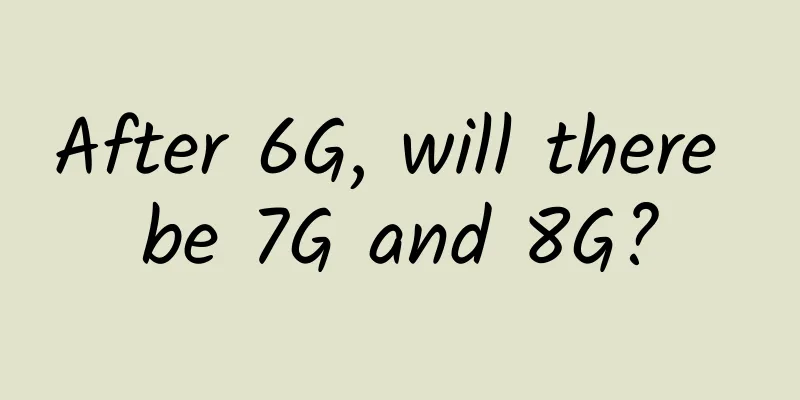After 6G, will there be 7G and 8G?

|
But in any case, from 1G to 5G, it has developed according to this law, at least from the technical standards. This should be similar to Moore's Law, which is also a "self-fulfilling prophecy." So, after 6G, will there be 7G or even 8G? Here is another prediction: Kondratieff cycle. The so-called Kondratiev cycle is a law discovered by Russian economist Kondratiev through statistics: it is an economic cycle lasting 40 to 60 years in developed commodity economies, also called the "Kondratiev long wave" or "K-wave". picture In a Kondratieff cycle, there are generally three stages, namely expansion, stagnation and recession. The more common practice now is to divide it into four stages, that is, to add a turning point between expansion and stagnation. The Kondratieff cycle reflects a fact that has been observed many times: after the emergence of new things, there will be growth, expansion and prosperity, followed by the inevitable decline and gradual fading from the public eye. picture Looking back at the history of mobile communications, we can find that it is relatively consistent with this cycle. 1G and 2G rose steadily amid fragmentation and chaos, 3G and 4G ushered in a high-glow era for mobile communications, and 5G and 6G are being questioned... Could it be that the gears of time have really reached their highest point? Let's apply the Kondratieff cycle to make a simple prediction: based on the 50-year cycle, 32 years have passed since 2G was commercially available, and there are still 18 years left. picture Assuming that 6G is commercialized in 2030 and 7G in 2040, it will be exactly 17 years from now. After that, we may enter the real "long-term evolution", and 8G will probably not be explicitly mentioned again. To sum up, 5G is the last generation of the public network. With the oversupply of network capacity, 6G and later technologies are mainly used to solve industry applications, which are difficult for the public to perceive. After 7G, it will solve the problem of fragmentation in various professional fields. There is no need to make a big fuss about how many G it is. |
<<: Industrial Internet communication protocol types, functions and connection methods
Recommend
18 pictures tell you: 10 key technical points that a 90-point network engineer should master
"As a network engineer, what does it take to...
Zgovps: $16.9/year-AMD EPYC 7402P/2GB/25G SSD/2TB/40G defense/Netherlands data center
Zgovps is a new Chinese hosting provider that ope...
Industrial Internet + 5G, we must plan carefully before taking action
In the previous article, "IoT operating syst...
Fortinet once again ranked as a Visionary in the Gartner Magic Quadrant for Enterprise Wired and Wireless LAN Infrastructure for the third consecutive year
Fortinet recently announced that it has been name...
The legend of network protocols (Part 2): TCP emerges
This section will formally enter the content of n...
The role of 5G in realizing the next generation of smart cities
5G can improve the quality and performance of urb...
A big comparison of 5G packages among the three major operators: China Telecom is the most cost-effective, but I still don’t recommend it
5G has been commercialized for a long time, and m...
The three major operators have entered the "red ocean" of 5G mobile phones. Where does their confidence come from?
Since the commercial use of 5G, China Telecom, Ch...
HostDare: Los Angeles VPS 60% off + double memory + double bandwidth starting at $10.4/year - 1.5GB/10GB/1TB@200Mbps
HostDare has updated its VPS discount information...
Intent-based networking: Closing the network complexity gap
In the past decade, networks have undergone a var...
ShockHosting 50% off all VPS, 2G memory package starts at $5/month, optional large hard drive
ShockHosting is a foreign hosting company founded...
Let’s talk about 5G positioning technology
[[350699]] This article is reprinted from the WeC...
Maxthon Hosting: 54 yuan/month US CN2 GIA-2GB/30G SSD/500GB/Los Angeles Data Center
Aoyoyun is a long-established hosting company, fo...
Easy-to-understand illustrations of online interview knowledge - Part 1
Regarding network knowledge, I mainly talk about ...
Will 5G be the connectivity miracle for the Internet of Things?
Thanks to 5G, high-speed internet will soon be av...









